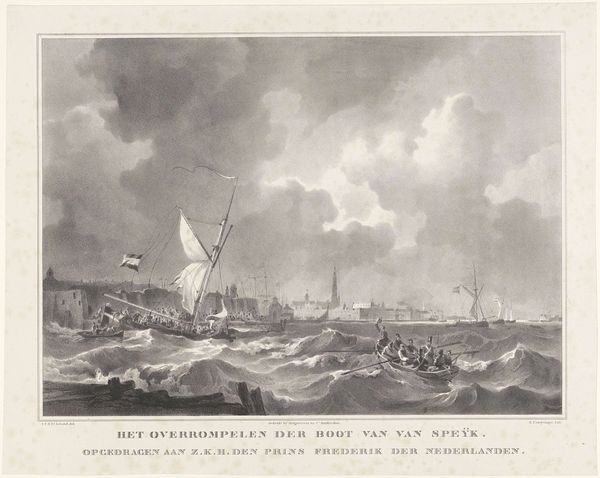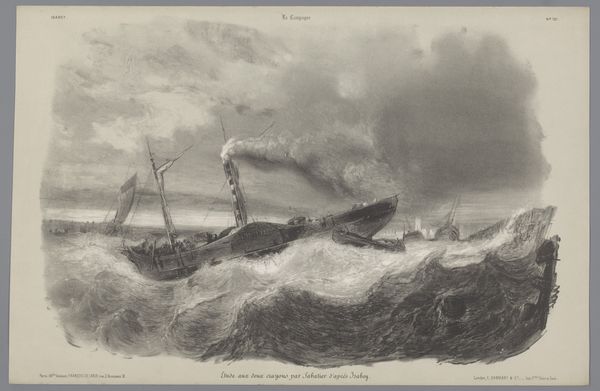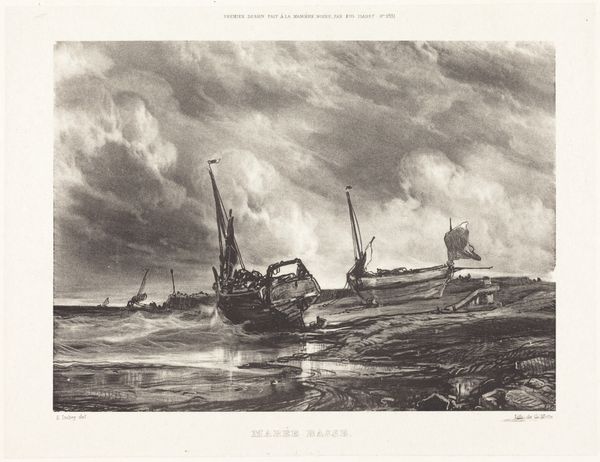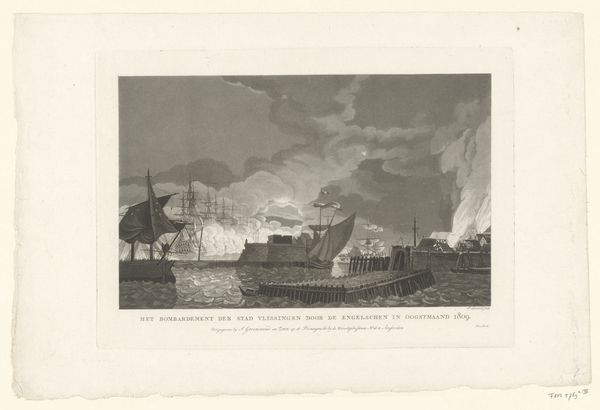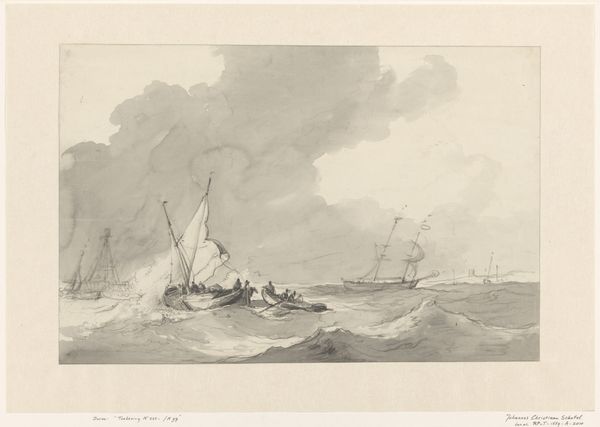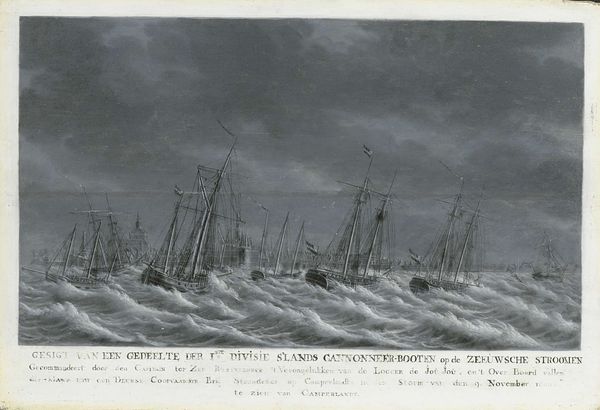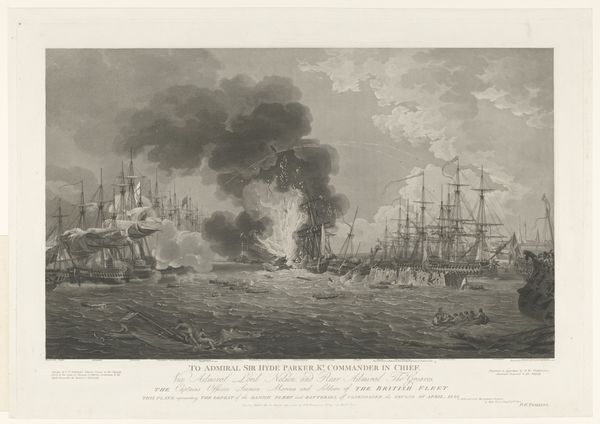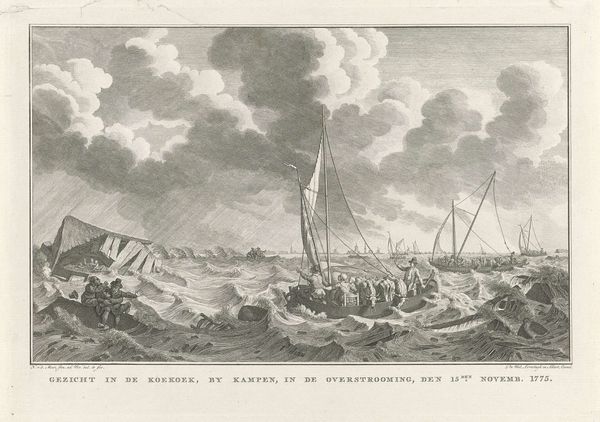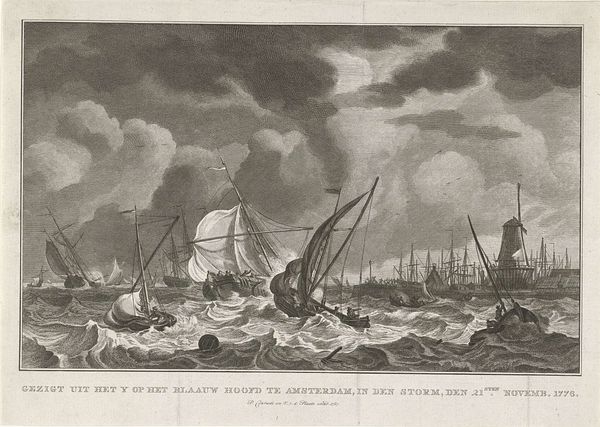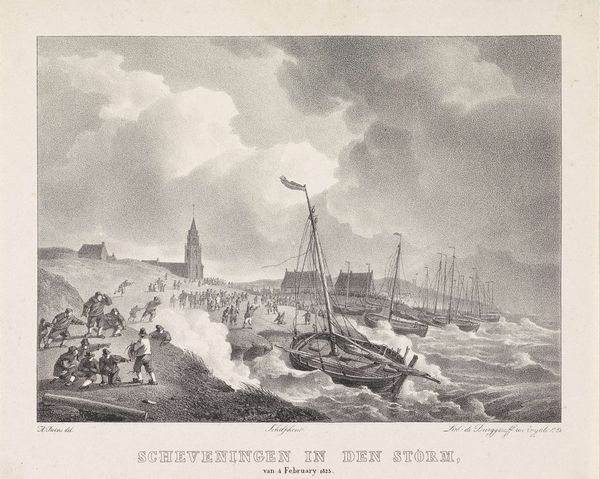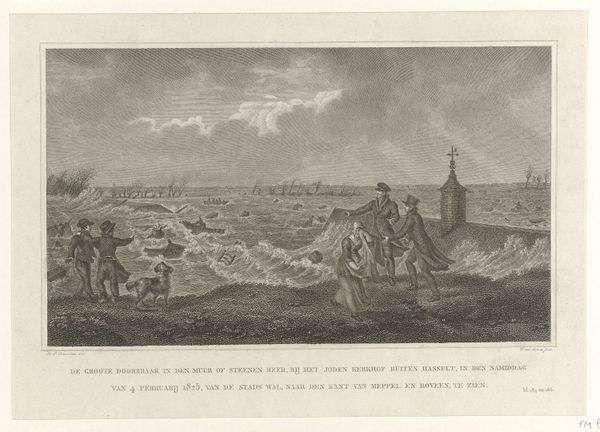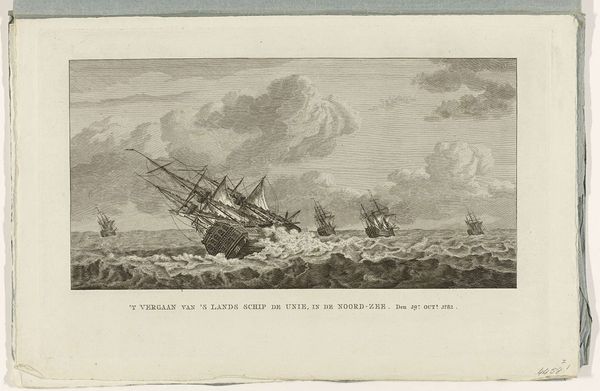
print, etching, engraving
# print
#
etching
#
old engraving style
#
historical photography
#
romanticism
#
19th century
#
cityscape
#
history-painting
#
engraving
Dimensions: height 421 mm, width 544 mm
Copyright: Rijks Museum: Open Domain
Editor: This etching by Gijsbertus Craeyvanger, made after 1831 and titled *Ontploffen van de boot van Jan van Speijk,* depicts a violent explosion at sea. It evokes a sense of chaos and destruction. How do you interpret this work within its historical context? Curator: The dramatic scene isn't simply about chaos, but about the politics of heroism and national identity. Jan van Speijk was a Dutch naval hero who blew up his own ship rather than surrender it to Belgian rebels during the Belgian Revolution. This print, therefore, becomes a powerful piece of nationalist propaganda, shaping collective memory and perpetuating a particular narrative about sacrifice and resistance. Consider the role of Romanticism in idealizing these events, even those rooted in conflict. Editor: So, the print isn't just showing us an event; it's actively trying to shape how people *feel* about that event. Is the intended audience the Dutch population and, if so, why did they need convincing of this ‘heroism’? Curator: Exactly. This image would have been widely circulated, influencing public opinion and solidifying Van Speijk's status as a martyr for the Dutch cause. What narratives are centered, and who is excluded? Who benefits from this construction of heroism and national identity, and whose voices are silenced in the process? It's about controlling the story, defining "us" versus "them," and rallying support for a specific political agenda. Editor: Thinking about it that way, the focus isn't just on the explosion, but on creating a national myth, a visual argument. Thank you. Curator: Precisely. And recognizing that allows us to engage critically with its message and understand its enduring power, for example to question to what degree this national myth-making continues to permeate contemporary society.
Comments
No comments
Be the first to comment and join the conversation on the ultimate creative platform.
